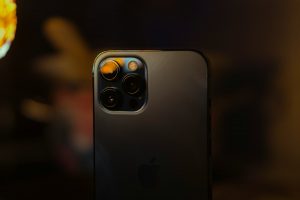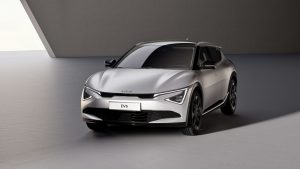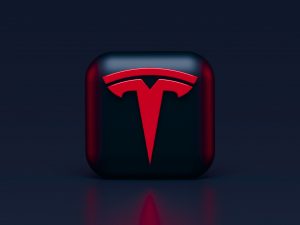Pixel 6a vs. Pixel 6: A Budget-Friendly Faceoff

Google has carved a name for itself in the world of budget-friendly smartphones with its Pixel “a” series, and the Pixel 6a has been no exception. Released in 2022, the Pixel 6a stood out as one of the top smartphones of the year—not just in the mid-range category but across the entire market. Even now, in 2023, the Pixel 6a continues to attract attention, especially as Google has significantly lowered its price while keeping it available as an affordable alternative to its newer models.
However, for those seeking a cost-effective Pixel experience, another contender exists—the original Pixel 6. With a competitive resale market, many are left wondering: should you go for a brand-new Pixel 6a or a pre-owned Pixel 6? Both models bring their unique strengths and compromises to the table, making this decision more nuanced than it might seem.
Price and Release Date
The Pixel 6a was introduced as the budget-friendly member of the Pixel 6 family, offering many of the series’ signature features but at a more affordable price. When first released, the Pixel 6a came at a competitive price point, but recent price reductions have made it even more appealing in 2023. Meanwhile, the Pixel 6, launched earlier, originally came with a higher price tag but has since become more accessible through resale platforms. The $150 difference between a new Pixel 6a and a used Pixel 6 is worth examining to determine which one offers the best value.
Design and Colors
In terms of design, the Pixel 6a carries the same clean and modern aesthetic that Google has made its trademark. It’s compact, with a 6.1-inch display, and fits comfortably in the hand, catering to those who prefer smaller smartphones. Available in subtle yet stylish color options, the Pixel 6a blends practicality with elegance.
The Pixel 6, on the other hand, offers a slightly larger display and a more premium build. Its bold color palette and larger size appeal to users who value a striking design and a bigger screen for multimedia use. Both models feature Google’s distinctive camera bar, which has become a signature design element of the Pixel lineup.
Hardware and Performance
Under the hood, the Pixel 6a and Pixel 6 share a lot in common, including Google’s in-house Tensor processor. This ensures smooth performance for everyday tasks, app usage, and even some light gaming. However, the Pixel 6 has the edge with additional RAM and a higher refresh rate, which makes multitasking and scrolling feel slightly smoother.
The Pixel 6a does come with some compromises. Its display operates at 60Hz, a noticeable downgrade compared to the Pixel 6’s 90Hz refresh rate. While this difference may not matter to every user, those accustomed to smoother animations might find the Pixel 6 more appealing. Both models deliver clean Android experiences with timely updates, a hallmark of Google’s Pixel series.
Camera Comparison
Google’s Pixel phones are renowned for their cameras, and the Pixel 6a is no exception. Despite its lower price point, the Pixel 6a retains an impressive camera system capable of producing sharp, detailed photos with vibrant colors. It is, however, missing some of the advanced features of the Pixel 6, such as a dedicated zoom lens.
The Pixel 6, with its superior camera hardware, offers more versatility. It handles challenging lighting conditions better and provides additional features for photography enthusiasts. For users who prioritize camera performance, especially in varied scenarios, the Pixel 6 might be the better choice.
Battery Life and Charging
Battery life is a critical factor for any smartphone user, and both the Pixel 6a and Pixel 6 perform decently in this regard. The Pixel 6a benefits from its smaller screen and slightly lower performance demands, which can translate to better endurance in real-world use. The Pixel 6, however, packs a larger battery, balancing out its higher power consumption.
Neither device includes a charger in the box, a growing trend in the smartphone industry. Users will need to purchase a compatible charger separately if they don’t already own one. Both phones support fast charging, but they lack the ultra-fast speeds seen in some competitors’ devices.
Pixel 6a Pros and Cons
Advantages of the Pixel 6a:
- Outstanding value for the price.
- A fast Tensor processor ensures smooth performance.
- Impressive camera quality for its price segment.
- Compact 6.1-inch size feels comfortable in hand.
- Clean Android experience with regular software updates.
- Satisfying “staccato” haptic feedback.
- Good loudspeaker quality.
Drawbacks of the Pixel 6a:
- No dedicated zoom camera.
- Google’s reputation for occasional bugs may deter some buyers.
- Display limited to 60Hz refresh rate.
- Lacks a headphone jack.
- Does not include a charger in the box.
Conclusion: Which One Should You Choose?
Ultimately, choosing between the Pixel 6a and Pixel 6 comes down to your priorities and budget. If you’re looking for an affordable phone that delivers a great balance of performance, camera quality, and software experience, the Pixel 6a is an excellent choice, especially given its reduced price in 2023.
However, if you don’t mind opting for a used device and value a larger display, smoother performance, and better camera capabilities, the Pixel 6 might be worth the extra investment. Both phones capture the essence of what makes Google’s Pixel series special, ensuring you won’t go wrong with either choice






